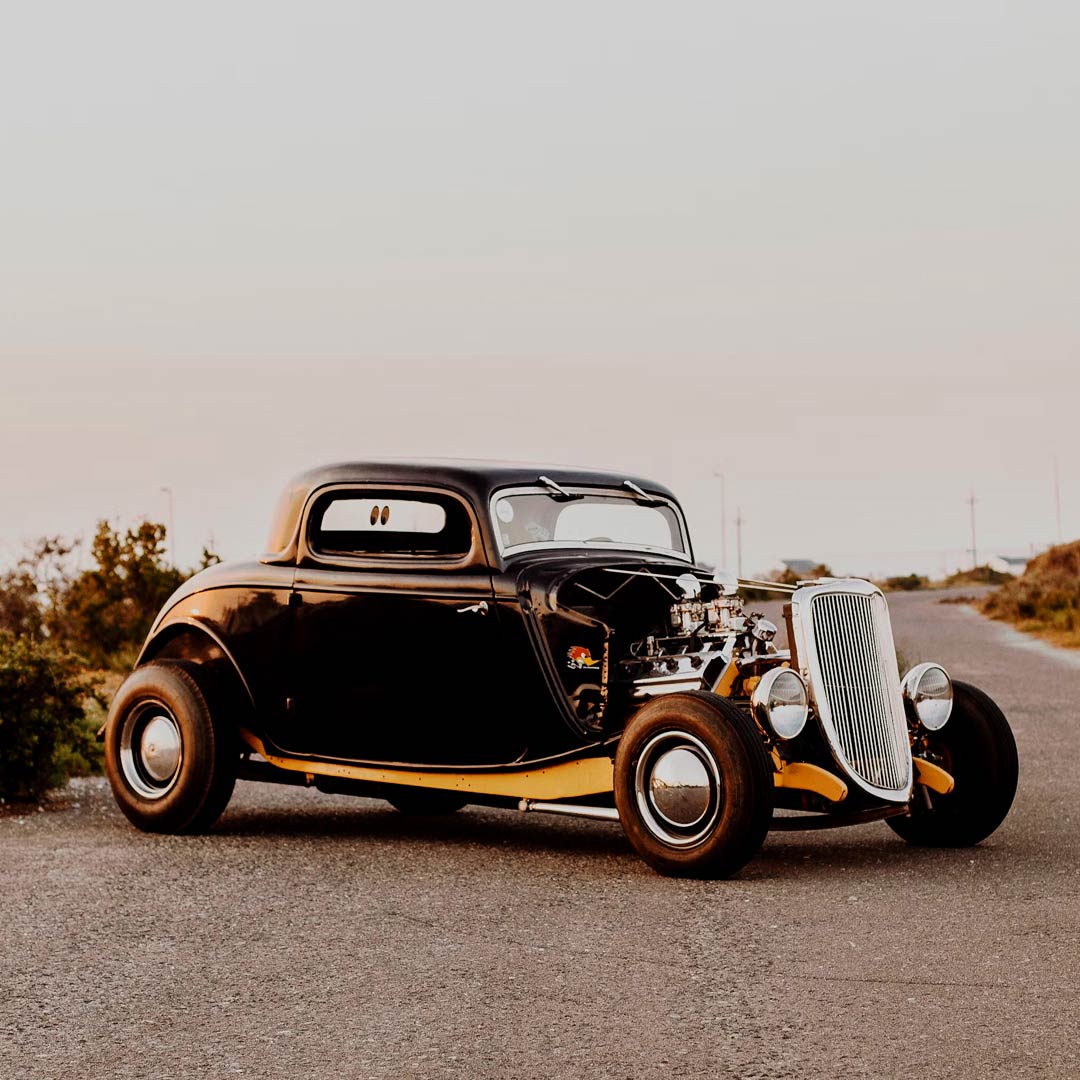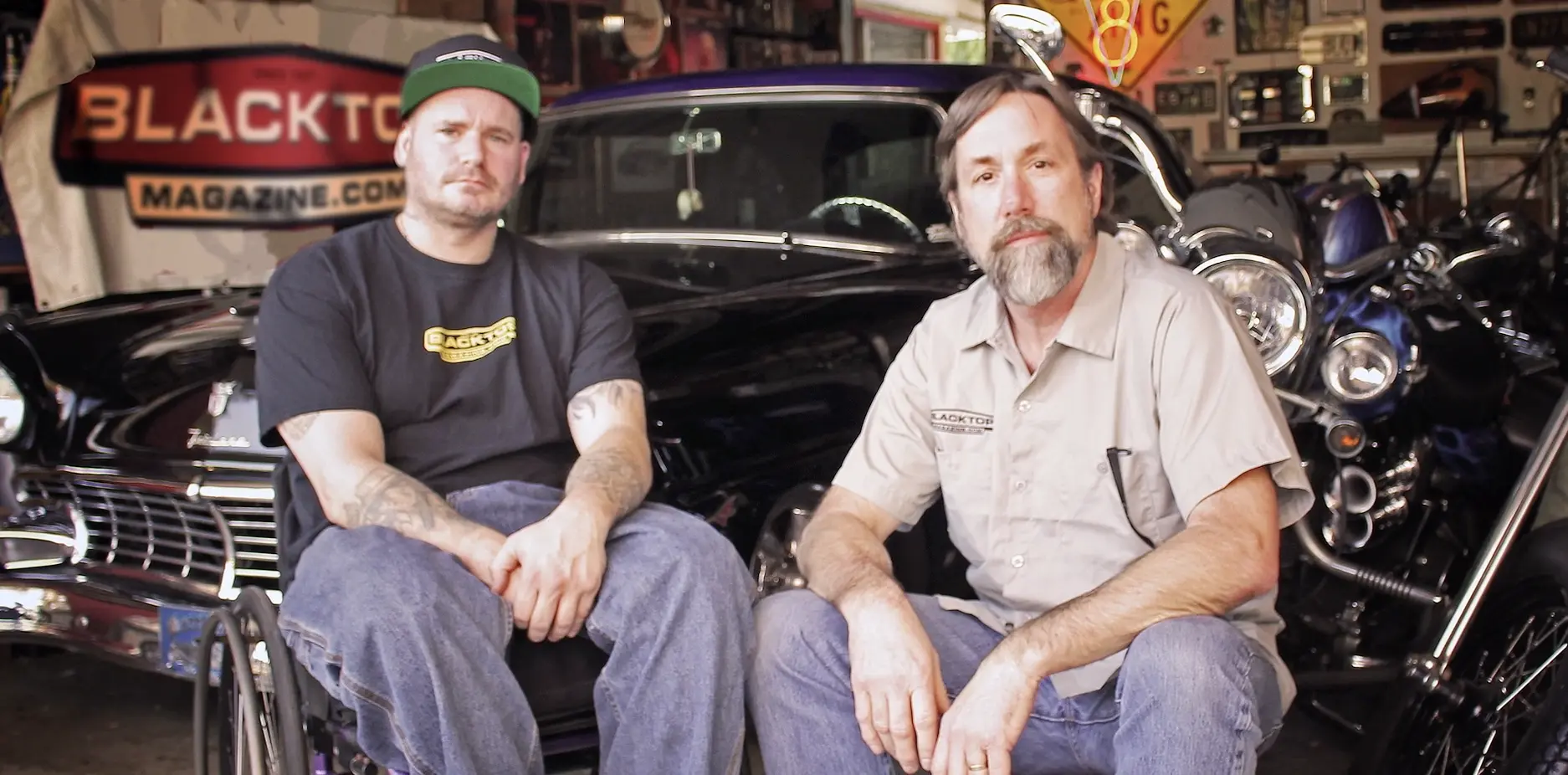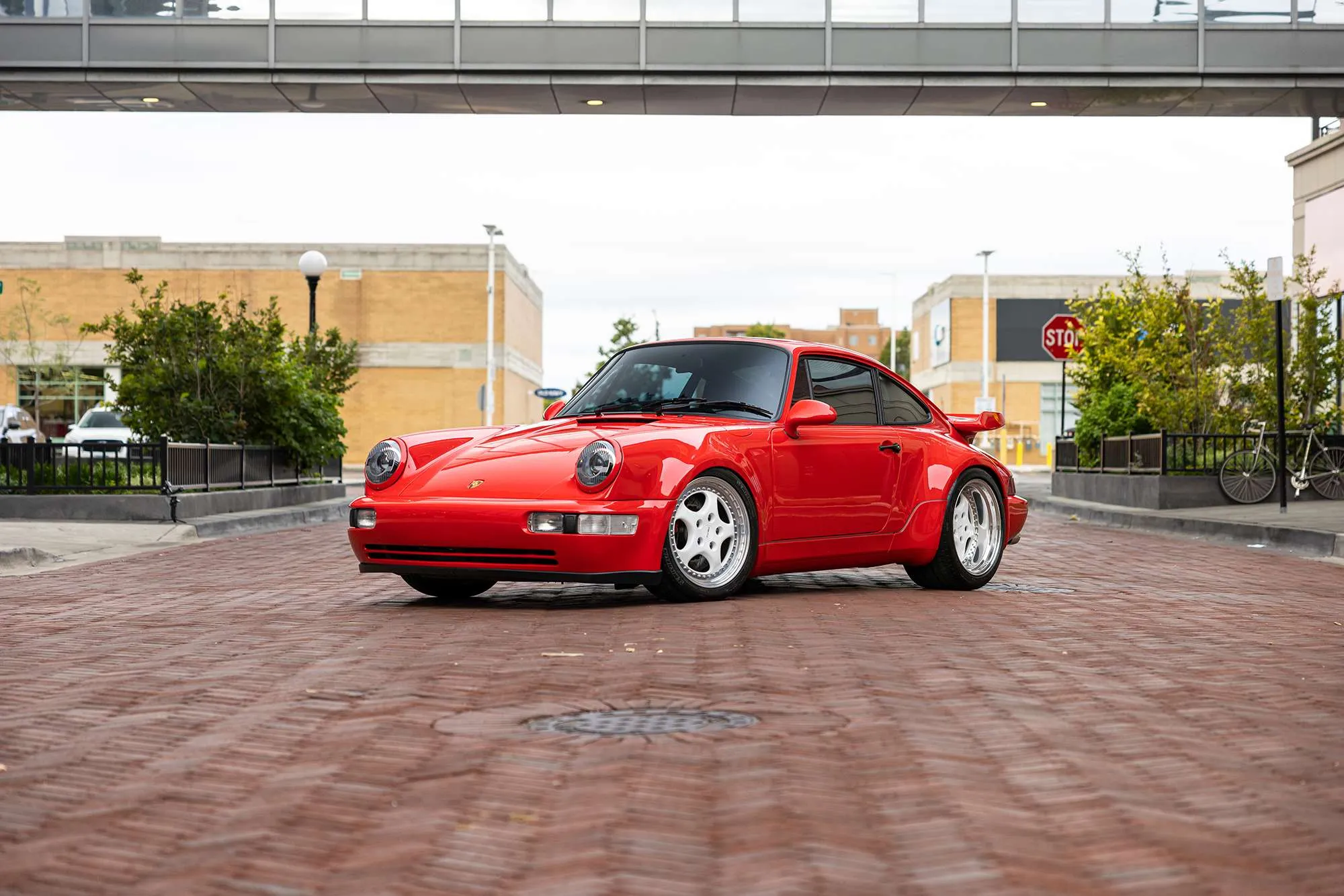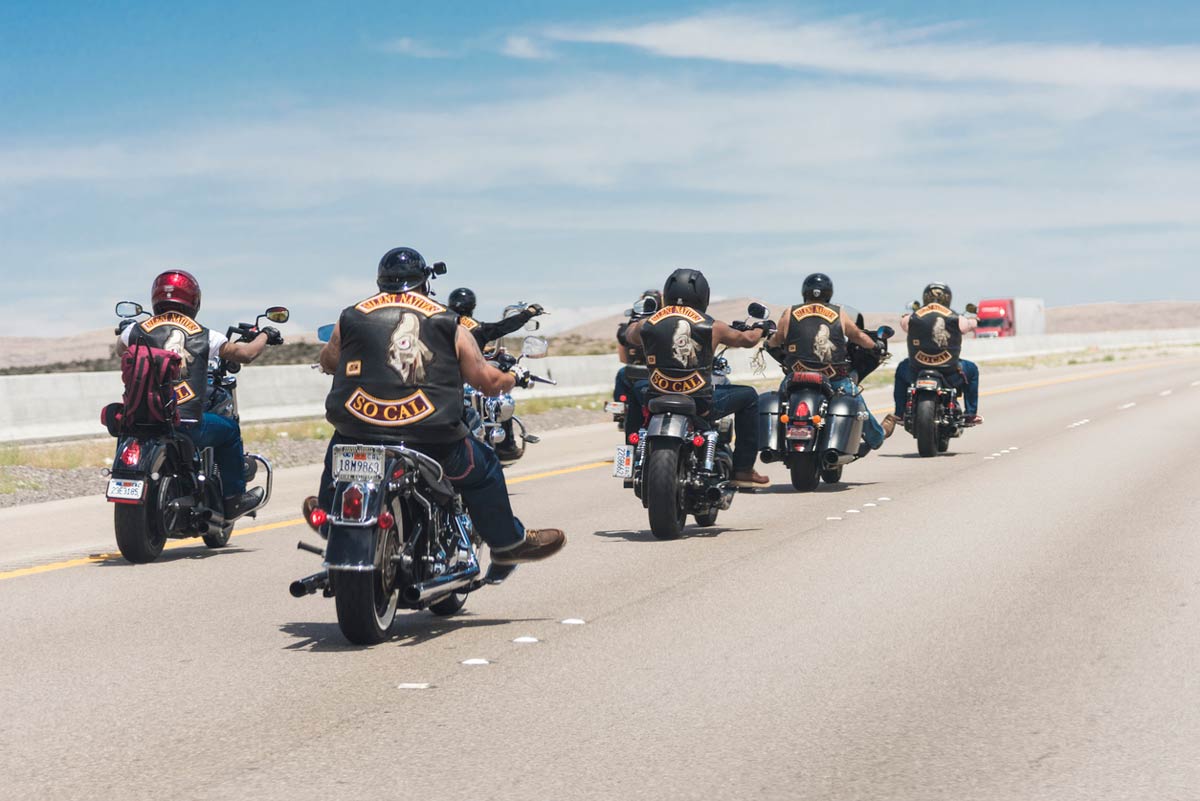The term “hot rod” conjures up images of sleek, powerful cars roaring down the open road, but what exactly qualifies a car as a hot rod? The world of hot rodding is a fascinating subculture with a rich history, filled with innovation, creativity, and a passion for speed.
The term “hot rod” originated in the early 20th century, referring to modified cars that were “hot-rodded” or souped-up for increased speed and performance. There are competing theories about where the terminology comes from. It’s thought that the word “rod” was slang for a car, specifically being short for “roadster,” but some also think that “rod” refers to the camshaft, which were often modified to increase power output. As for the “hot” part, it probably signified the added power and modifications that set these cars apart from their factory counterparts. “Hotting up” a car was a way of referring to increasing performance through modification.
In fact, the earliest group who could be described as hot rodders were probably bootleggers running illegal liquor during prohibition. It’s well known that NASCAR traces its origins to individuals from this criminal underworld gathering to see whose modded-out cars were the fastest, but the aspiring mechanics who adjusted their vehicles to better outrun law enforcement officers paved the way for the subculture as it is known today.
The formal world of hot rodding traces its origins back to Southern California, however, where enthusiasts began to upgrade and modify their cars not to evade law enforcement, but simply as a recreational pastime. Although similar to the early days of NASCAR, these motorheads could also often be found gathering to determine who had the fastest car, either by racing one another or the clock, sometimes out at locations like the Bonneville Salt Flats.
Although in its early days hot rodding would simply be a way of referring to modifying your car for more speed and power, today it’s become linked to the early days of automotive history, and the classic aesthetics of that era are bound up with our conceptions of hot rods.
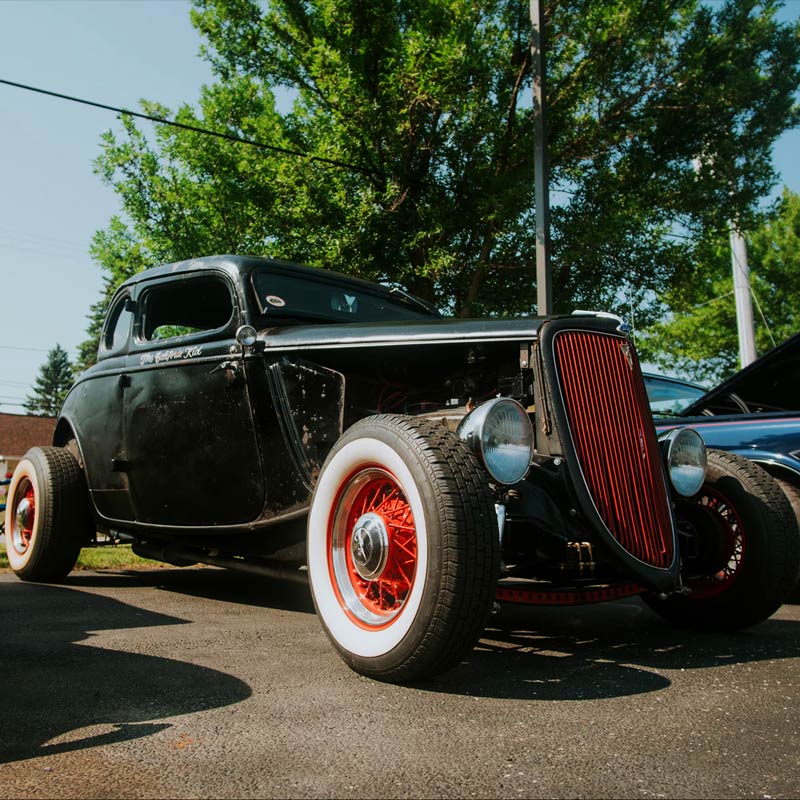
What Makes a Hot Rod a Hot Rod?
At its core, a hot rod is a custom-built or modified vehicle designed for speed and performance. While there’s no strict definition, certain characteristics are commonly associated with hot rods:
Engine Modifications: Hot rods often feature high-performance engines that have been modified or replaced to boost horsepower and torque. Superchargers, turbochargers, and custom exhaust systems are common upgrades.
Exterior Customization: These cars typically have custom paint jobs, body modifications, and unique styling elements that set them apart from stock vehicles. This can include chopped roofs, lowered suspensions, and aftermarket wheels.
Upgrades: The interior of a hot rod is often customized with high-quality materials, custom upholstery, and modern amenities to enhance comfort and aesthetics.
Performance Enhancements: Hot rods are designed to deliver exceptional performance on the road or track, with upgraded brakes, suspension systems, and other components to handle the increased power and speed.
Classic Aesthetics: Although there is no hard and fast rule for time period, make, or model, it’s generally agreed that there are certain kinds of cars that qualify as hot rods and certain kinds that don’t. One of the demarcations would be the classic aesthetics. Cars from the 1930s and 1940s would often be included in the group (assuming they meet the requirements above) but it would become harder to judge beyond that.
Notable Hot Rods
Although sometimes determining a hot rod from just a souped-up car is a matter of opinion, the following rides would definitely qualify for hot-rod status once they’d been properly upgraded and decked out.
Ford Model T
Often referred to as the “T-bucket,” the Ford Model T is one of the most popular platforms for hot rod customization. Its simple design and affordable price made it a favorite among early hot rodders.
Ford Deuce Coupe
The 1932 Ford Deuce Coupe is another legendary hot rod model, celebrated for its classic styling and potential for customization. It has been featured in numerous films and remains a sought-after collector’s item.
Cadillac Sedanette
Also known as the Series 61 or the Coupe de Ville, the Cadillac Sedanette is a luxury two-door fastback sedan produced by Cadillac from 1941 to 1951 known for its sleek and stylish design and powered by Cadillac’s V8 engine.
Lincoln Zephyr
The Lincoln Zephyr was known for its innovative design and advanced engineering features and was one of the first cars to incorporate aerodynamic styling and a streamlined body that was ahead of its time and it was one of the first American cars to offer a V12 engine.
Mercury 8
Produced by the Mercury division of Ford Motor Company from 1939 to 1951, it was introduced as a mid-priced option between Ford’s mainstream models and the more luxurious Lincoln lineup, offering consumers a stylish and more upscale alternative without the higher price tag associated with luxury brands.
Willys Americar
Produced by Willys-Overland Motors from 1937 to 1942, it was introduced as a compact and affordable car aimed at the mass market, offering consumers an economical and reliable transportation option during the Great Depression era. The coupe version is a very popular hot rod choice.
The Allure of Hot Rods
What is it about hot rods that captures the imaginations of collectors and restoration enthusiasts? For many, it’s the blend of artistry, craftsmanship, and engineering prowess that goes into creating these unique vehicles. Each hot rod is a reflection of its builder’s creativity and personality, making it a one-of-a-kind masterpiece.
The thrill of driving a high-performance machine that’s been customized to your specifications is another major draw. Hot rods offer an exhilarating driving experience that’s hard to replicate with factory-built cars, making them highly coveted among speed enthusiasts.
The community aspect of hot rodding plays a significant role in its appeal. Hot rod enthusiasts form tight-knit communities, sharing tips, tricks, and camaraderie at car shows, races, and online forums. This sense of belonging and shared passion for hot rodding adds another layer of enjoyment to the hobby[1] .
In the early history of hot rodding, car clubs played a crucial role in fostering and spreading the culture of hot rods. These groups provided a sense of community and camaraderie among enthusiasts, allowing them to share knowledge, techniques, and resources. Car clubs organized events such as drag races, car shows, and meet-ups, which helped to popularize hot rodding and showcase the creativity and engineering prowess of their members. By promoting safety standards and advocating for the interests of hot rodders, these clubs also helped to legitimize and professionalize the hobby, ensuring its growth and development into a significant cultural movement.
The world of hot rodding is a vibrant and diverse subculture with a rich history dating back over a century. From its humble beginnings with backyard mechanics tinkering with Model T’s to the high-tech, custom-built creations of today, hot rodding continues to captivate and inspire enthusiasts around the world. Whether you’re a seasoned collector or a newcomer to the hobby, the allure of hot rods is undeniable. So, next time you see a sleek, customized car cruising down the road, you’ll know it’s more than just a vehicle—it’s a hot rod, a symbol of creativity, craftsmanship, and the relentless pursuit of speed.
